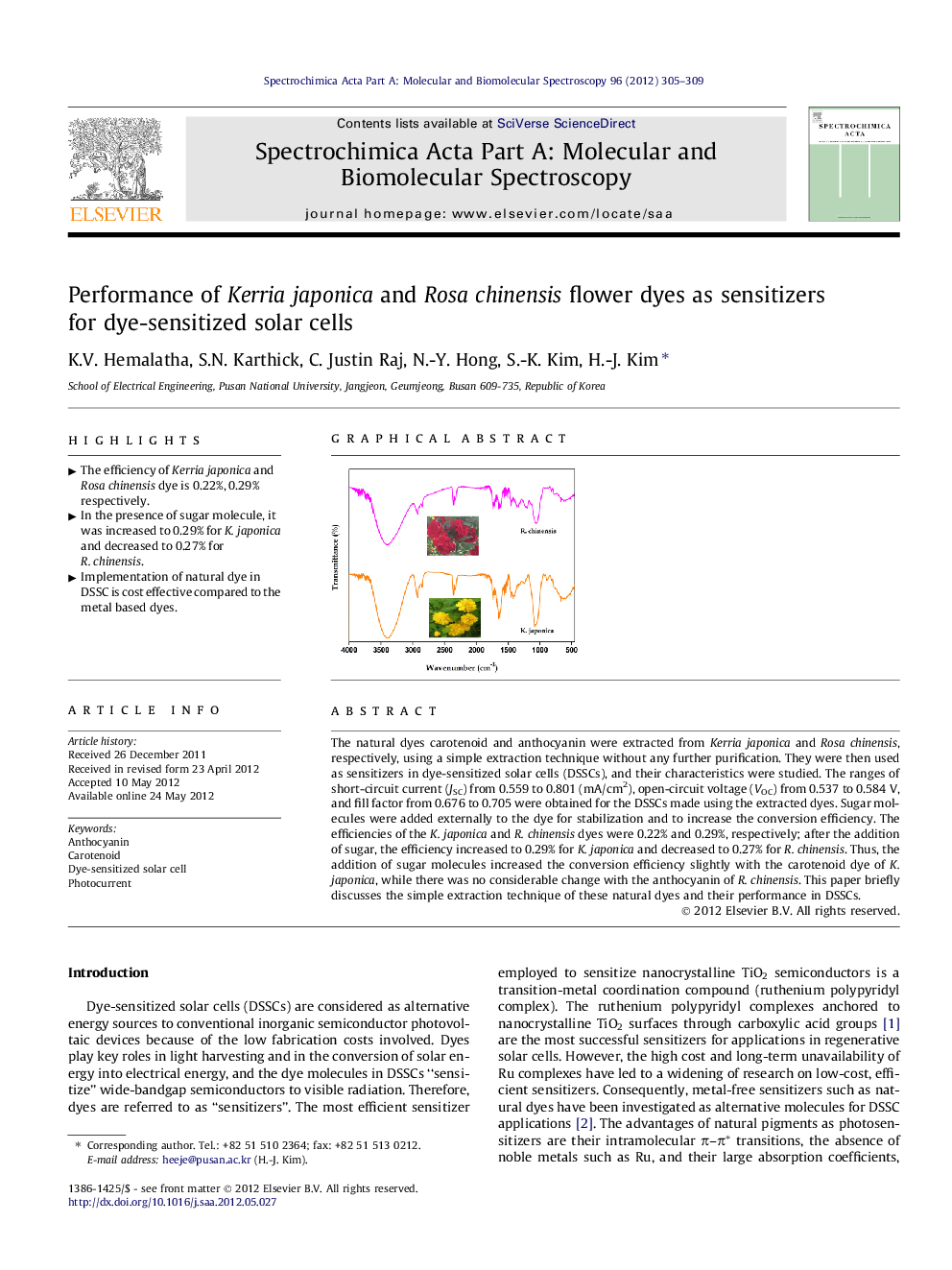| Article ID | Journal | Published Year | Pages | File Type |
|---|---|---|---|---|
| 1234412 | Spectrochimica Acta Part A: Molecular and Biomolecular Spectroscopy | 2012 | 5 Pages |
The natural dyes carotenoid and anthocyanin were extracted from Kerria japonica and Rosa chinensis, respectively, using a simple extraction technique without any further purification. They were then used as sensitizers in dye-sensitized solar cells (DSSCs), and their characteristics were studied. The ranges of short-circuit current (JSC) from 0.559 to 0.801 (mA/cm2), open-circuit voltage (VOC) from 0.537 to 0.584 V, and fill factor from 0.676 to 0.705 were obtained for the DSSCs made using the extracted dyes. Sugar molecules were added externally to the dye for stabilization and to increase the conversion efficiency. The efficiencies of the K. japonica and R. chinensis dyes were 0.22% and 0.29%, respectively; after the addition of sugar, the efficiency increased to 0.29% for K. japonica and decreased to 0.27% for R. chinensis. Thus, the addition of sugar molecules increased the conversion efficiency slightly with the carotenoid dye of K. japonica, while there was no considerable change with the anthocyanin of R. chinensis. This paper briefly discusses the simple extraction technique of these natural dyes and their performance in DSSCs.
Graphical abstractFigure optionsDownload full-size imageDownload as PowerPoint slideHighlights► The efficiency of Kerria japonica and Rosa chinensis dye is 0.22%, 0.29% respectively. ► In the presence of sugar molecule, it was increased to 0.29% for K. japonica and decreased to 0.27% for R. chinensis. ► Implementation of natural dye in DSSC is cost effective compared to the metal based dyes.
